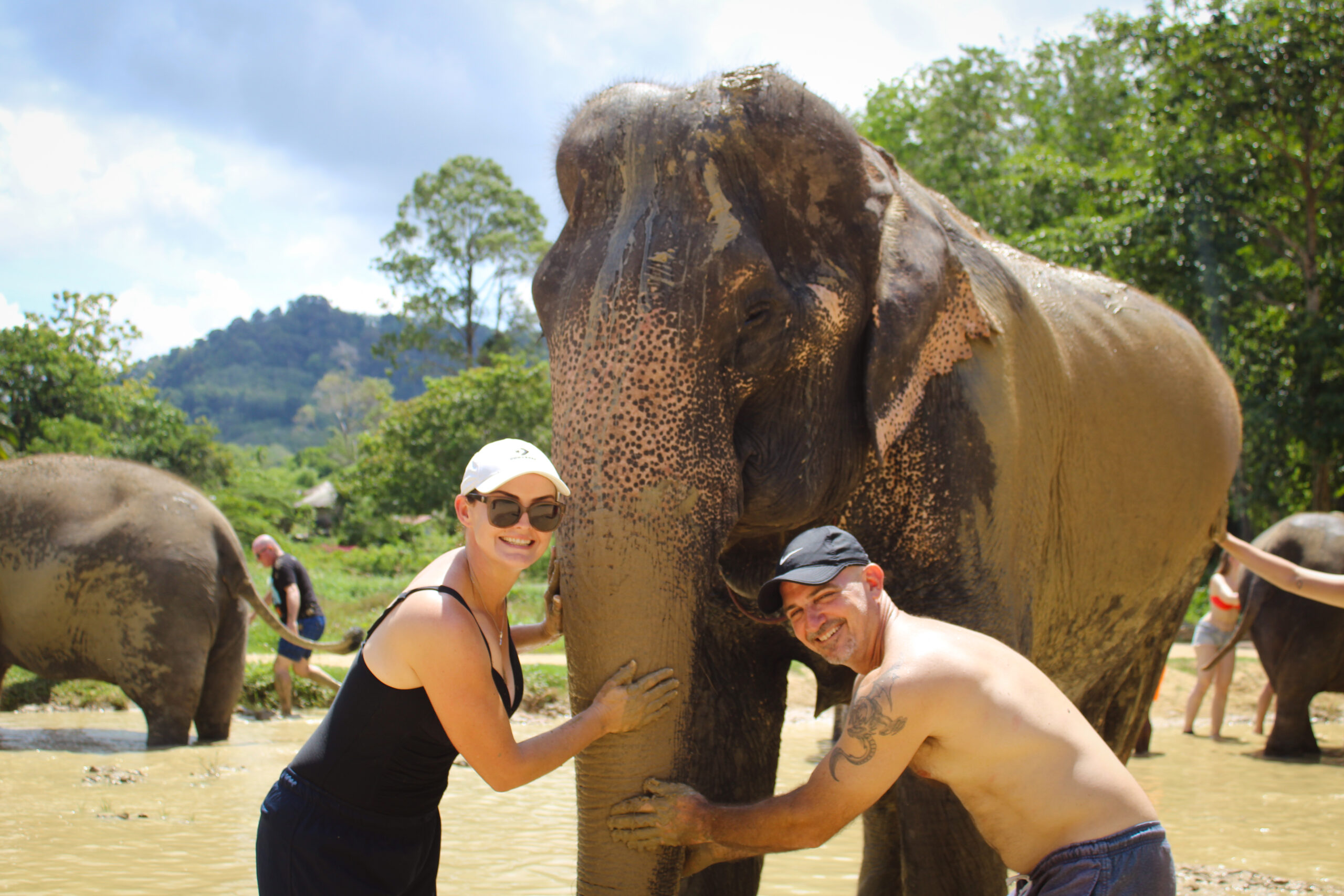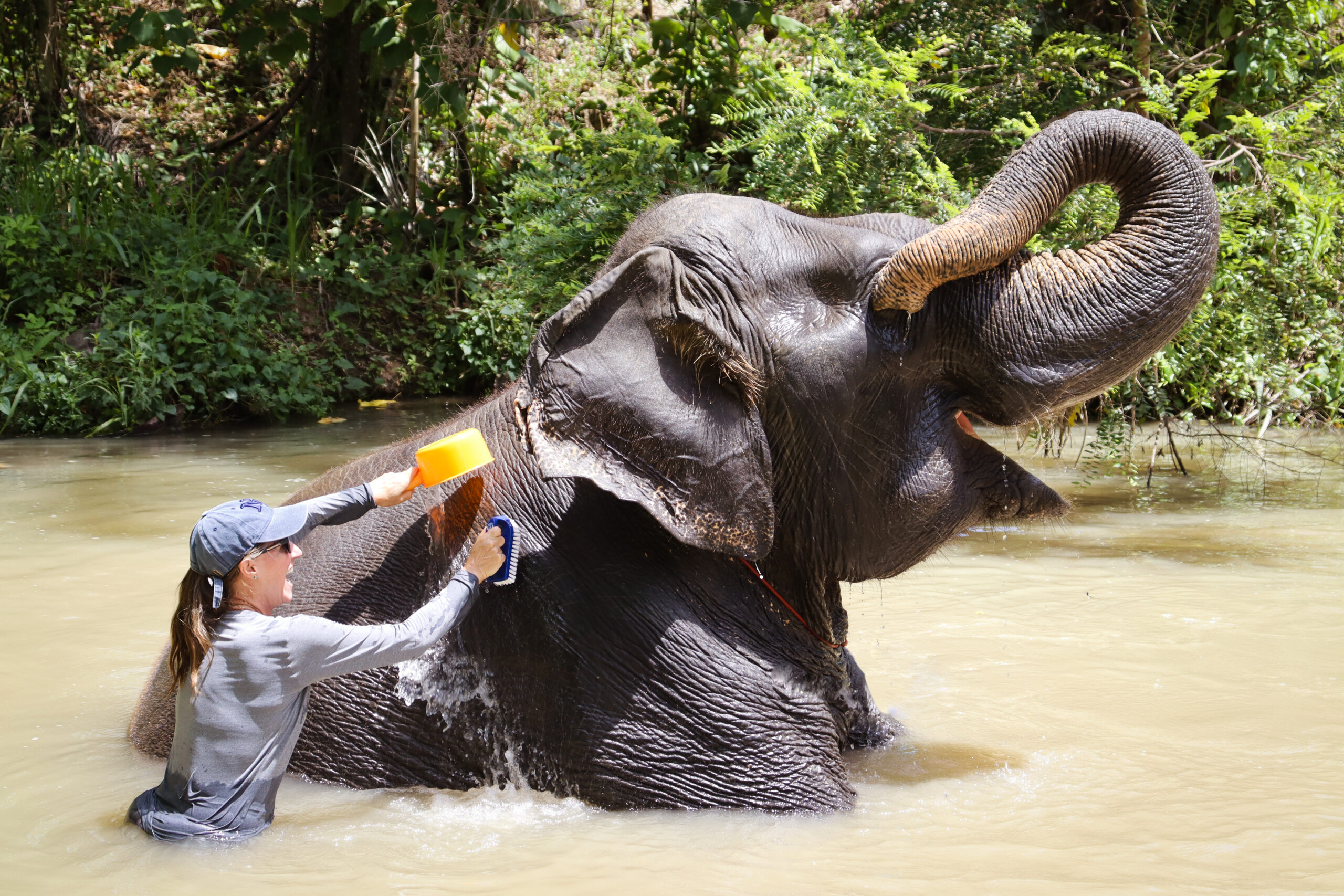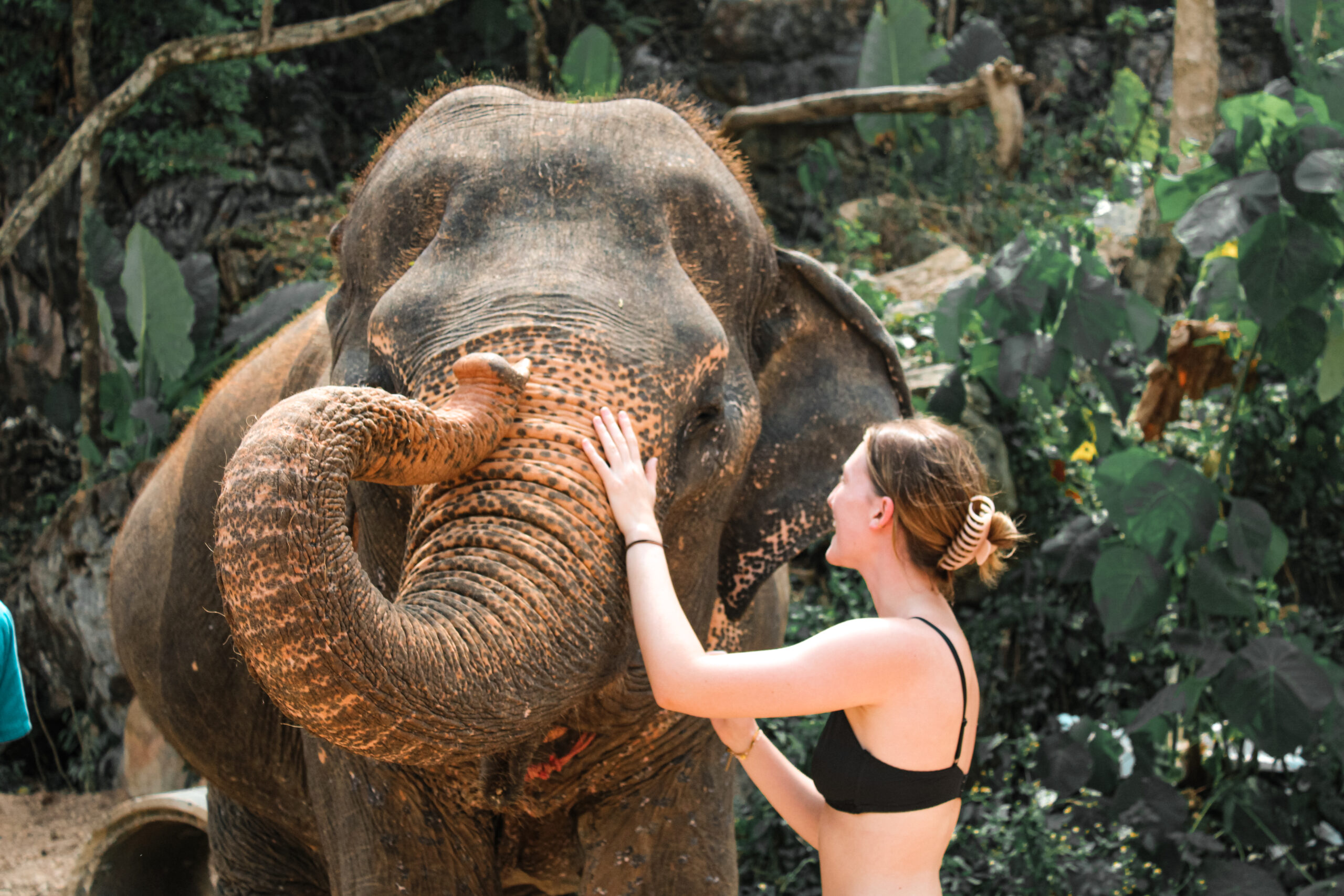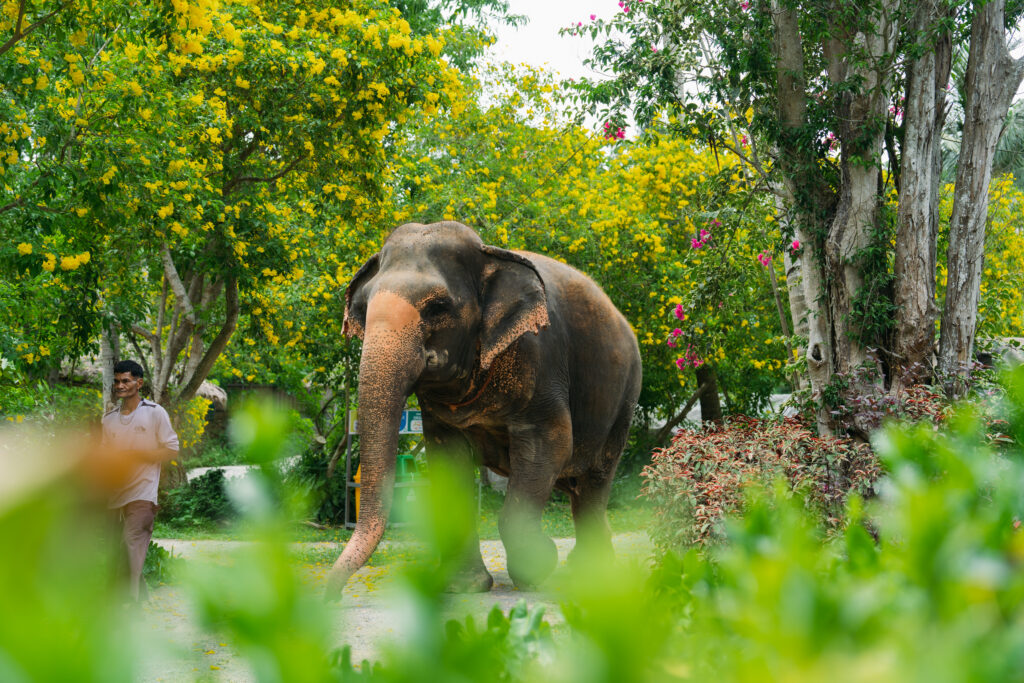
The allure of Thailand’s Elephant Sanctuary has captivated the hearts of travelers from across the globe, drawing them into a world where wildlife conservation intersects with once-in-a-lifetime experiences. These sanctuaries not only offer refuge to elephants rescued from the logging and tourism industries but also provide an educational platform for visitors, emphasizing the importance of ethical animal tourism. In this comprehensive guide, we’ll explore why Thailand’s Elephant Sanctuary has become a must-visit for eco-conscious tourists and adventure seekers alike.
The Ethical Approach to Elephant Tourism
The ethical approach to elephant tourism is at the heart of Thailand’s elephant sanctuary popularity. Unlike traditional elephant camps that offer circus-like performances, sanctuaries prioritize the well-being and natural behaviors of these majestic creatures. Visitors have the unique opportunity to observe elephants roaming freely in their natural habitat, bathing in rivers, and socializing with their herd. This shift towards ethical tourism not only enriches the visitor experience but also plays a critical role in changing the narrative around elephant conservation.
A Deep Dive into Conservation Efforts
Thailand’s elephant sanctuaries are at the forefront of conservation efforts, offering a beacon of hope for the future of Asian elephants. These sanctuaries work tirelessly to rescue and rehabilitate elephants that have been subjected to harsh conditions. Through engaging and informative tours, visitors learn about the challenges facing elephants, including habitat loss, poaching, and the ivory trade. By supporting these sanctuaries, tourists contribute to a sustainable model of conservation that benefits both the elephants and the local communities involved in their care.
Immersive Cultural Experience
Visiting an elephant sanctuary in Thailand isn’t just about the elephants; it’s an immersive cultural experience. Many sanctuaries are nestled in picturesque landscapes that showcase Thailand’s stunning natural beauty, from lush jungles to rolling hills. Tourists have the chance to interact with local mahouts (elephant caretakers) and learn about traditional methods of elephant care. This cultural exchange enriches the travel experience, providing insights into the deep spiritual and historical connections between Thai people and elephants.

Sustainable Tourism Practices in Thailand’s Elephant Sanctuary
Sustainability is a key factor in the popularity of Thailand’s elephant sanctuary. These establishments are often involved in broader environmental initiatives, such as reforestation projects and community education programs. By choosing to visit an elephant sanctuary, tourists are making a conscious decision to support sustainable tourism practices that have a positive impact on the environment and local economies.
Unforgettable Personal Encounters
Perhaps the most compelling reason for the popularity of Thailand’s elephant sanctuary is the chance for personal encounters with these gentle giants. Whether feeding them, participating in mud baths, or simply observing them in their natural surroundings, these interactions leave lasting impressions on visitors. These personal encounters not only foster a deeper appreciation for elephants but also highlight the importance of conservation efforts.
The Role of Education in Elephant Conservation
Education plays a pivotal role in the mission of elephant sanctuaries in Thailand. Visitors are not merely spectators; they are students learning about the complexities of elephant conservation. Sanctuaries offer educational programs that cover the biology of elephants, the threats they face in the wild, and the importance of preserving their natural habitats. This educational aspect is crucial, as it empowers tourists with knowledge, turning them into advocates for elephant conservation long after they return home.
The Community’s Involvement
The success of elephant sanctuaries in Thailand is also a testament to the local community’s involvement. These sanctuaries often collaborate with local villages, providing employment opportunities and a sustainable source of income that doesn’t rely on exploiting elephants. By integrating conservation efforts with community development, sanctuaries help to ensure that the local population views the elephants as valuable assets worth protecting. This symbiotic relationship between sanctuaries and local communities is a model for conservation efforts worldwide.
A Day in the Life at a Thailand Elephant Sanctuary
For those wondering what a visit to a Thailand elephant sanctuary entails, imagine starting your day with the misty morning air of the Thai countryside. Visitors might begin with a briefing on the sanctuary’s mission and the stories of the elephants residing there. This could be followed by preparing and delivering meals of fresh fruit to the elephants, observing their complex social interactions, and perhaps even joining them for a bath in a nearby river. Each activity is designed to respect the elephants’ space and autonomy, providing a rare glimpse into their natural behaviors and social structures.
The Psychological Impact on Elephants
It’s essential to acknowledge the psychological impact on elephants that have been rescued by these sanctuaries. Many of these elephants have endured trauma from their previous lives in logging or entertainment. Sanctuaries provide them with a haven where they can recover and live out their lives in peace. The care provided by the sanctuaries includes not just physical care, but also attention to their emotional and psychological well-being. Witnessing the transformation of these elephants, from traumatized individuals to thriving members of a herd, is a profound experience for visitors.
Personal Reflections and Takeaways
Visiting an elephant sanctuary offers more than just the opportunity to see elephants up close; it provides a moment for personal reflection on our relationship with nature. It’s a reminder of the impact humans have on the environment and the responsibility we carry to protect it. The sanctuaries serve as a microcosm of a larger movement towards more ethical and sustainable interactions with the natural world.
How You Can Support Elephant Conservation
For those moved by the plight of elephants and inspired by the work of the sanctuaries, there are many ways to support conservation efforts. Donations to reputable sanctuaries and conservation organizations can provide the necessary funds for elephant care, habitat restoration, and educational programs. Additionally, advocating for ethical tourism and wildlife conservation in your community can raise awareness about the importance of protecting these magnificent animals.
In Conclusion: Why Thailand Elephant Sanctuary is popular for tourists

The popularity of Thailand’s elephant sanctuaries among tourists is a beacon of hope for elephant conservation. It signifies a shift towards more responsible and ethical interactions with wildlife, where the well-being of animals is placed above entertainment. These sanctuaries offer a unique blend of education, conservation, and personal growth opportunities, making them not just a destination but a journey into the heart of what it means to coexist with nature. As we continue to explore and connect with the world around us, let’s remember the lessons learned from these gentle giants and the sanctuaries that protect them.
Supporting the narratives that inspire and educate requires resources. For those who’ve been touched by the story of Thailand’s elephant sanctuaries and wish to contribute to the creation of more enlightening content, consider uniquely showing your support by visiting this link. Your contributions not only fuel further explorations but also help spread the message of conservation and coexistence far and wide.
Through comprehensive understanding, ethical engagement, and a commitment to conservation, each visit to an elephant sanctuary contributes to a larger narrative of hope and preservation. The sanctuaries are not just places to visit but pillars of a global effort to ensure that elephants, and wildlife at large, have a fighting chance for a future where they can thrive in harmony with humans.
Frequently asked questions
What is a Thailand elephant sanctuary?
A Thailand elephant sanctuary is a dedicated conservation area where elephants are protected, rehabilitated, and can live in a natural environment. These sanctuaries provide a haven for elephants rescued from the tourism industry, logging, or other situations where they may have been mistreated. They prioritize the well-being and ethical treatment of elephants, offering tourists an opportunity to learn about and interact with these magnificent creatures responsibly.
Why are elephant sanctuaries in Thailand popular among tourists?
Elephant sanctuaries in Thailand have gained popularity for several reasons. They offer a unique, ethical, and intimate experience with elephants, allowing visitors to observe and interact with them in a setting that prioritizes the animals’ welfare. Tourists are drawn to the educational aspect, learning about elephant conservation and the threats these animals face. The sanctuaries also provide a sustainable tourism option that supports local communities and conservation efforts.
How do elephant sanctuaries in Thailand contribute to conservation?
Elephant sanctuaries in Thailand contribute to conservation by rescuing and rehabilitating elephants, providing them with a safe and natural environment. They also play a crucial role in educating the public about the importance of elephant conservation, the challenges these animals face in the wild, and the negative impacts of unethical tourism practices. Additionally, many sanctuaries are involved in research, habitat restoration, and community outreach programs that further support conservation efforts.
Are there ethical concerns with visiting elephant sanctuaries?
The rise in popularity of elephant sanctuaries has led to the establishment of some venues that do not adhere to ethical standards, misleading tourists under the guise of conservation. It is crucial for tourists to research and choose sanctuaries that are genuinely committed to the well-being of elephants, offering transparent practices and focusing on conservation and education rather than entertainment.
What should tourists expect when visiting an elephant sanctuary?
Visitors should expect an educational and enriching experience that offers insight into the lives of elephants and the importance of conservation. Be prepared for a hands-off approach to interaction, where the well-being of the elephants is the top priority. Tourists should also expect to learn a lot, not only about elephants but also about the local culture and the role of conservation efforts in Thailand.
How does visiting an elephant sanctuary support local communities?
Many elephant sanctuaries in Thailand are integrated with local communities, providing employment opportunities and a sustainable source of income that does not involve the exploitation of elephants. By visiting these sanctuaries, tourists are directly contributing to the local economy and supporting a model of tourism that benefits both the people and the wildlife.
Can children visit elephant sanctuaries in Thailand?
Yes, children can visit most elephant sanctuaries in Thailand. These visits can be an invaluable educational experience, teaching children about wildlife conservation, ethical tourism, and the importance of empathy towards animals. However, it’s important to choose sanctuaries that are family-friendly and to supervise children closely during the visit.
How can I support elephant sanctuaries in Thailand if I can’t visit?
If you’re unable to visit an elephant sanctuary in Thailand, there are still many ways to support their efforts. Consider making a donation to a reputable sanctuary, adopting an elephant (symbolically), or raising awareness about the importance of ethical tourism and conservation through social media and community involvement. Every bit of support helps contribute to the welfare of elephants and the success of conservation efforts.





